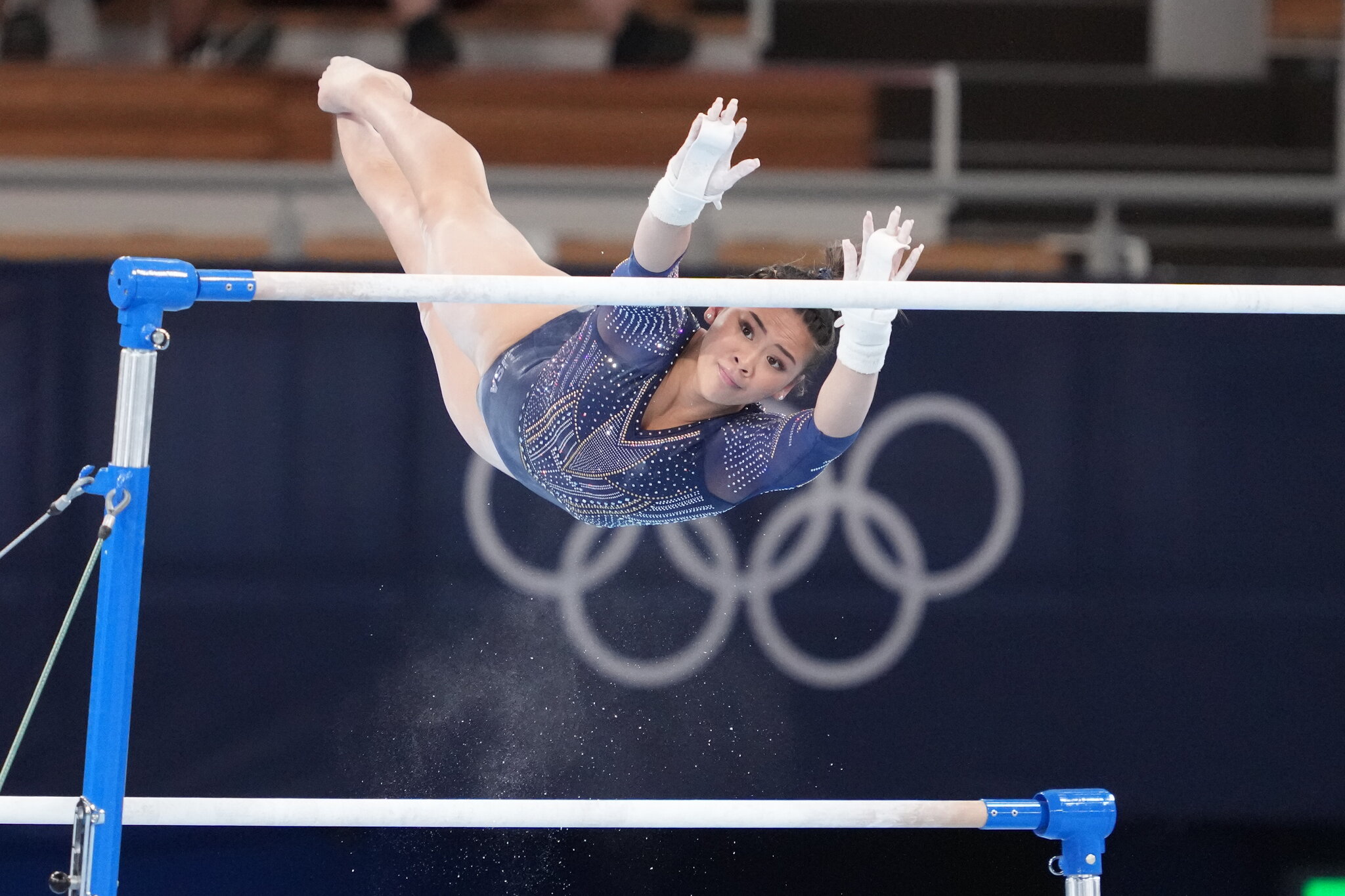By Nikolina Koulouri,
Competing in the Olympic Games is a dream come true for athletes across the globe, and for artistic gymnasts, it’s the result of years of dedication, training, and sacrifice. From the early morning conditioning sessions to the last-minute routines before the competition, the road to the Olympics is paved with determination and passion. So, as an ex-gymnast, I am here to give you information about the process of competing from a young age, to reaching the greatest stage of the sport, the Olympic Games.
Most Olympic gymnasts start their journey at a very young age, often around 4 or 5 years old. The early beginnings of a child recently involved in the sport contains learning basic skills and developing a love for the sport. At this stage, young gymnasts spend a few hours each week in the gym, focusing on fun and fundamental movements that also help with building strong relationships with fellow kids, as well as synchronizing the brain and the body.
As gymnasts grow older and potential is shown in the eyes of their coaches, their training intensifies. By the time they are in their pre-teens and teens, they are usually training 20-30 hours per week. This period is crucial for skill development, strength building, and perfecting techniques. Around this time too, gymnasts start competing in small meets or state meets. Therefore, they start to adopt the mindset of competition and professional athletics.
A regular day of a competitive athlete often begins with a morning conditioning session. This includes cardiovascular exercises, strength training, and flexibility drills to build a strong foundation. Due to morning practice many teens choose to be homeschooled, so as to accommodate their rigorous training schedule. Usually, after completing their daily studying, they head back to the gym for several hours of practice. This session focuses on routines, apparatus work, and refining skills.

Of course, qualifying for the Olympics is a much more complex matter. The road to the Olympics involves several stages of qualification, including national and international competitions. Gymnasts must perform consistently well to earn a spot on their national team and then secure a place in the Olympic squad. Performing well at events, such as national or world championships or Cups, can help gymnasts earn points and recognition on the international stage, which is crucial in order to succeed Olympic qualification.
Once selected, the final preparations for the Olympics begin. This phase is all about perfecting routines, mental preparation, and fine-tuning every aspect of performance. Every move, flip, and landing is practiced until it becomes second nature. Gymnasts participate in mock competitions to simulate the Olympic environment. This helps them get used to performing under pressure and fine-tune their mental game. The ability to stay calm and focused during high-pressure situations is as important as physical prowess. Working with sports psychologists helps gymnasts build this much needed mental resilience.
Fast forward, the Olympic Games have begun. Arriving at the Olympic Village is a surreal experience. The village is a melting pot of cultures, with athletes from all over the world. It’s a place where dreams and nerves coexist, and lifelong memories are made. Gymnasts are expected to acclimate to their new environment quickly, ensuring they are comfortable and have everything they need. This includes adjusting to the time zone, getting used to the beds, and familiarizing themselves with the dining options.

The day of the competition is a blend of excitement and nerves. Gymnasts have a set routine to ensure they are physically and mentally ready. They arrive at the venue early to do a walkthrough of their routines and get a feel of the apparatus. This time is also used to calm nerves and focus. Performing at the Olympics is definitely the ultimate test. Gymnasts rely on their training, trust their instincts, and give their best performance. Each routine is executed with precision, grace, and determination. But that is not always the case. Injuries may occur or unfortunate circumstances that do not allow the athlete to give their best. Feelings of anger, disappointment and sadness arise but they later turn into much stronger determination for the next big Games.
Whether they win a medal or not, competing at the Olympics is an achievement in itself. The experience, the friendships, and the lessons learned are invaluable. After the Olympics, it’s time to set new goals. Some gymnasts may continue to compete, while others may transition to coaching or other roles within the sport.
The journey to the Olympics for an artistic gymnast is a testament to hard work, passion, and resilience. It’s a path filled with challenges, but the reward of representing one’s country on the world stage is worth every sacrifice. So, the next time you watch these incredible athletes perform, you’ll have a glimpse into the dedication and heart that goes into every flip, twist, and turn.
References
- How to train an artistic gymnast, with Scott Hann, coach of three-time Olympic medallist Max Whitlock. Olympics. Available here
- What It’s Actually Like to Live in the Olympic Village, According to the Athletes. Self. available here




